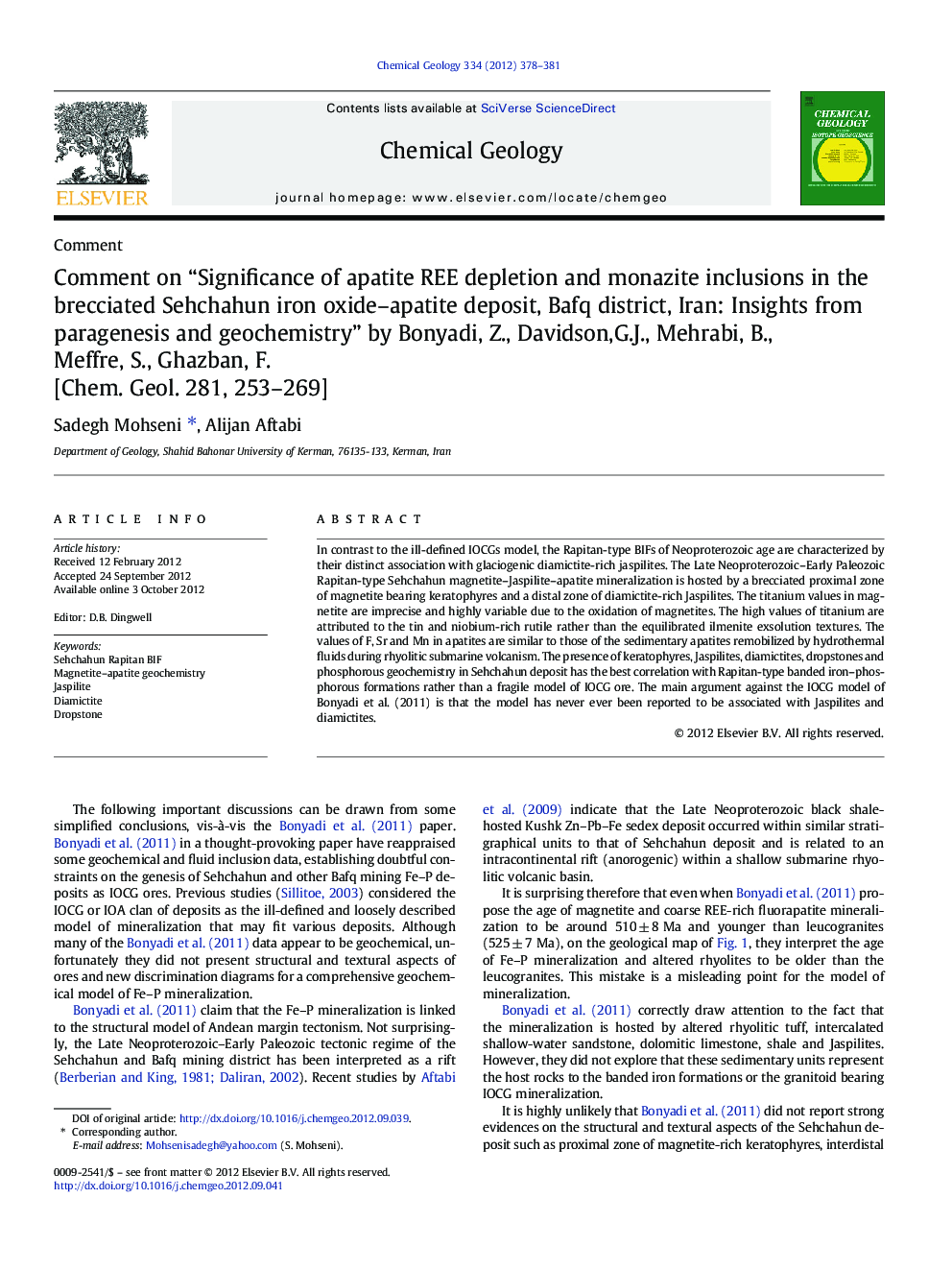| Article ID | Journal | Published Year | Pages | File Type |
|---|---|---|---|---|
| 4699194 | Chemical Geology | 2012 | 4 Pages |
In contrast to the ill-defined IOCGs model, the Rapitan-type BIFs of Neoproterozoic age are characterized by their distinct association with glaciogenic diamictite-rich jaspilites. The Late Neoproterozoic–Early Paleozoic Rapitan-type Sehchahun magnetite–Jaspilite–apatite mineralization is hosted by a brecciated proximal zone of magnetite bearing keratophyres and a distal zone of diamictite-rich Jaspilites. The titanium values in magnetite are imprecise and highly variable due to the oxidation of magnetites. The high values of titanium are attributed to the tin and niobium-rich rutile rather than the equilibrated ilmenite exsolution textures. The values of F, Sr and Mn in apatites are similar to those of the sedimentary apatites remobilized by hydrothermal fluids during rhyolitic submarine volcanism. The presence of keratophyres, Jaspilites, diamictites, dropstones and phosphorous geochemistry in Sehchahun deposit has the best correlation with Rapitan-type banded iron–phosphorous formations rather than a fragile model of IOCG ore. The main argument against the IOCG model of Bonyadi et al. (2011) is that the model has never ever been reported to be associated with Jaspilites and diamictites.
